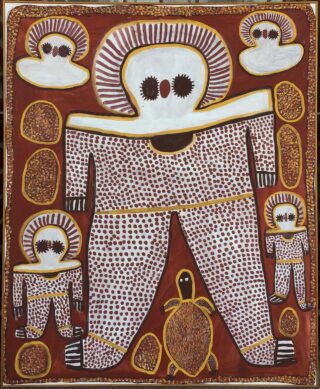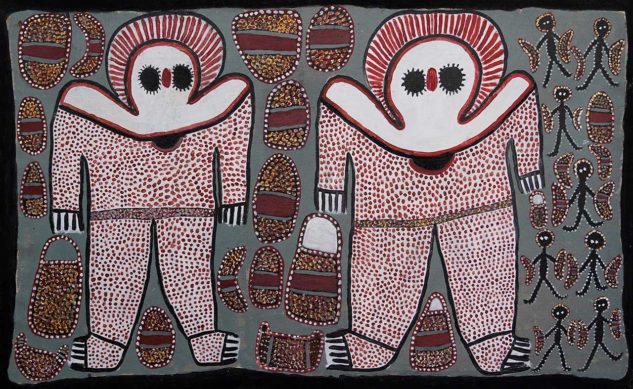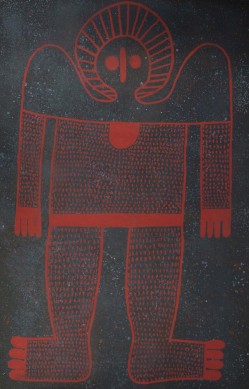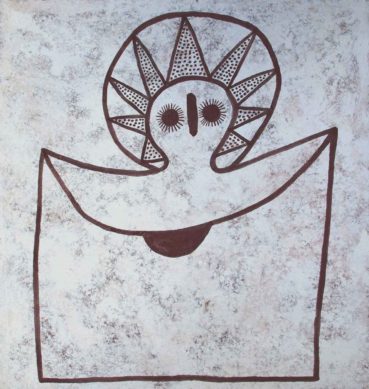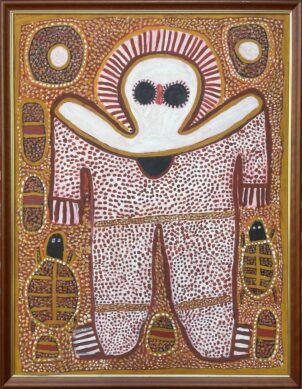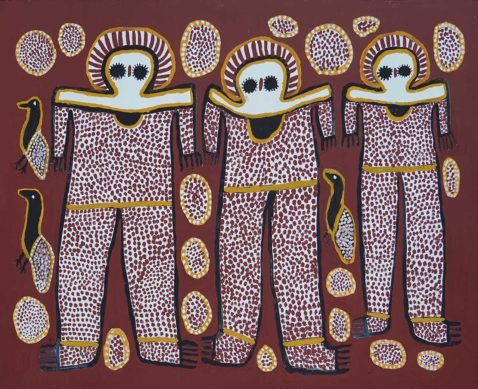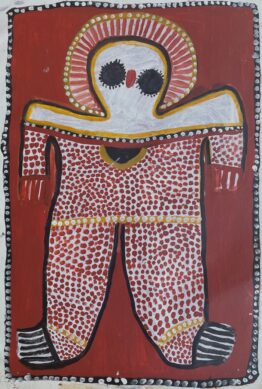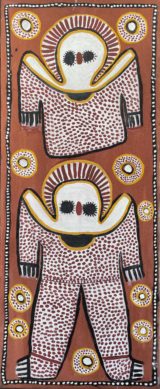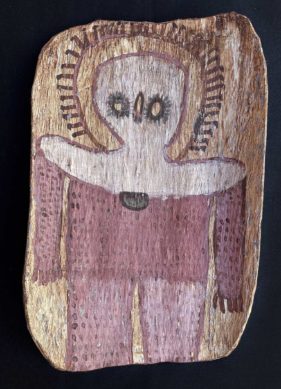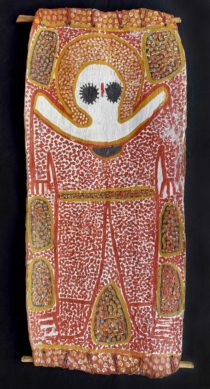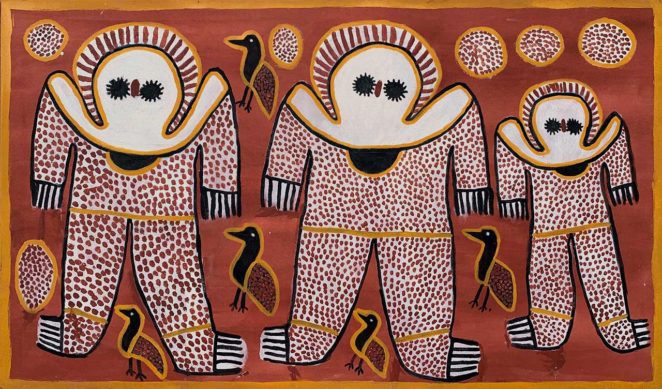Kalumburu Aboriginal Art
A selection of paintings showing the styles from this Aboriginal art region - some paintings may still be available for sale, while some may have been sold.
Kalumburu is the most northerly permanent settlement in the Kimberley region of Western Australia, and is situated on the King Edward River. The settlement was established in 1908 by Benedictine monks travelling from New Norcia, who were joined by the Benedictine Sisters in 1930, when the mission was shifted thirty kilometres inland from the original coastal site to freshwater pools on the King Edward River.
Kalumburu is at the north eastern edge of one of the world’s largest regions of ancient rock art gallery sites. This corner of the continent was one of the main entry points into Australia of the earliest Aboriginal inhabitants, arriving at times of low sea levels some 60,000 years ago. Evidence of their occupation is preserved in the rock art sites which are abundant, and show the differing and various layers of human cultural activities. So far the oldest Aboriginal rock paintings have been dated back 18,000 years, although further advances in technology should allow greater dates to be established.
The wild and rugged landscape of this area has been home for many thousands of years to Aboriginal people of the Kwini and Walmbi, the Cambra – Kulari language groups. Now joining them at the Kalumburu community are people from the Wunumbul, Worrorra and Ngarinyin language groups from adjoining areas to the south. The cultural connections of the people at Kalumburu to the sites containing ancient and more contemporary rock art, which feature Wandjina and Gyorn Gyorn spirit figures, provide sources of imagery found in the paintings from Aboriginal artists from the area.
Further information is available on exhibiting artists on the following links:

